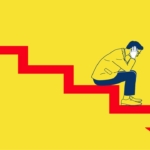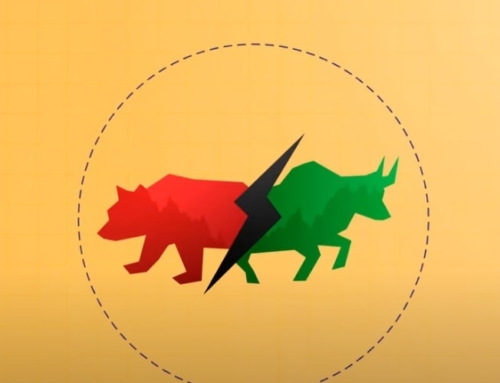Bullish Harami
Introduction
Making money as a stock trader is not an easy task. It requires a lot of patience and the right skills to become a successful trader.
Risk management, critical thinking, and analytical skills are some of the key skills needed by a trader.
One of the key traits to becoming a successful trader is to identify trends and patterns using candlestick charts. There are numerous candlestick patterns that are used to identify the trend in a stock price.
Let’s understand “Bullish Harami” one of the most popular and widely used candlestick patterns in detail.
What is Bullish Harami?
Bullish Harami is a candlestick pattern that indicates the end of a bearish trend in a stock price.
It is indicated by a slight increase in stock price after a downward movement from a couple of days. Some traders look at bullish harami as a sign to enter into a stock for a long position.
In a bullish harami pattern, the first candle is bearish and is built upon the preceding bearish trend.
The second candle is usually a small white or green candle that gaps up and closes inside the body of the previous bar.
What does a bullish harami pattern indicate?
Although we cannot estimate the accuracy of these candlestick patterns, they are still a good way to learn about market movements.
Market participants are mostly bearish when the market is in a downtrend. Sellers dominate the market in a bearish trend and buyers wait for a signal that the bearish trend has come to an end.
The first candle in a bullish harami pattern does not indicate a bullish sentiment as there is selling pressure from previous days which pushes the market even lower.
However, the market opens on a positive note the next day. The selling pressure tries to push the market even lower but the buyers prevent the market from falling further.
In a bullish harami pattern, the stock price closes on a positive note on the second day but it is below the opening price of the previous day.
If the second green candle of a bullish harami pattern is formed when the overall market is not performing well, it is a sign of an uptrend which indicates that more buy orders are being placed on the stock.
Trading Strategy for Bullish Harami
The bullish harami pattern works precisely well across all time frames.
Intraday traders can use 5, 10, and 15-minute time frames and enter into a trade if the bullish harami pattern appears on any of these time frames.
60 minutes, daily and weekly charts can be used for entering into short-term and medium-term positions.
If the goal is to invest in a stock for the long term, a bullish harami pattern after a short-term correction can be used as a sign to buy quality stocks at bargain prices.
How to identify the Bullish Harami pattern?
A bullish harami pattern is formed during a “Trend reversal” or “Trend continuation”.
Trend reversal takes place when the stock has been on a downtrend for a long period of time. Traders should use other trading indicators as bullish harami is not very effective during major trend reversals.
When the stock has been on an uptrend for a long period but shows a small downside correction in the short term, it is a trend continuation. A trader can take short-term positions if the bullish harami pattern is formed during this correction.
Conclusion
Becoming a successful trader is not an overnight process. More than 90% of the traders fail because they lack the patience to study or practice trading strategies.
Even after a lot of practice and studying, you are likely to lose in some trades and that’s completely fine as long as you place bets with small amounts.
By now, you might have a fair understanding of the bullish harami pattern. However, it is only one among the many candlestick patterns.
It is equally important to learn about the other candlestick patterns to formulate a comprehensive trading strategy.
Howdy!
If you’re here for the first time, let’s get introduced.
VRD Nation is India’s premier stock market training institute and we (Team VRD Nation) are passionate about teaching each and every aspect of investing and trading.
If you’re here for the first time, don’t forget to check out “Free Training” section where we have tons of free videos and articles to kick start your stock market journey.
Also, we got two awesome YouTube channels where you can continue the learning process.
Must-Read Articles
Bullish Harami
Introduction
Making money as a stock trader is not an easy task. It requires a lot of patience and the right skills to become a successful trader.
Risk management, critical thinking, and analytical skills are some of the key skills needed by a trader.
One of the key traits to becoming a successful trader is to identify trends and patterns using candlestick charts. There are numerous candlestick patterns that are used to identify the trend in a stock price.
Let’s understand “Bullish Harami” one of the most popular and widely used candlestick patterns in detail.
What is Bullish Harami?
Bullish Harami is a candlestick pattern that indicates the end of a bearish trend in a stock price.
It is indicated by a slight increase in stock price after a downward movement from a couple of days. Some traders look at bullish harami as a sign to enter into a stock for a long position.
In a bullish harami pattern, the first candle is bearish and is built upon the preceding bearish trend.
The second candle is usually a small white or green candle that gaps up and closes inside the body of the previous bar.
What does a bullish harami pattern indicate?
Although we cannot estimate the accuracy of these candlestick patterns, they are still a good way to learn about market movements.
Market participants are mostly bearish when the market is in a downtrend. Sellers dominate the market in a bearish trend and buyers wait for a signal that the bearish trend has come to an end.
The first candle in a bullish harami pattern does not indicate a bullish sentiment as there is selling pressure from previous days which pushes the market even lower.
However, the market opens on a positive note the next day. The selling pressure tries to push the market even lower but the buyers prevent the market from falling further.
In a bullish harami pattern, the stock price closes on a positive note on the second day but it is below the opening price of the previous day.
If the second green candle of a bullish harami pattern is formed when the overall market is not performing well, it is a sign of an uptrend which indicates that more buy orders are being placed on the stock.
Trading Strategy for Bullish Harami
The bullish harami pattern works precisely well across all time frames.
Intraday traders can use 5, 10, and 15-minute time frames and enter into a trade if the bullish harami pattern appears on any of these time frames.
60 minutes, daily and weekly charts can be used for entering into short-term and medium-term positions.
If the goal is to invest in a stock for the long term, a bullish harami pattern after a short-term correction can be used as a sign to buy quality stocks at bargain prices.
How to identify the Bullish Harami pattern?
A bullish harami pattern is formed during a “Trend reversal” or “Trend continuation”.
Trend reversal takes place when the stock has been on a downtrend for a long period of time. Traders should use other trading indicators as bullish harami is not very effective during major trend reversals.
When the stock has been on an uptrend for a long period but shows a small downside correction in the short term, it is a trend continuation. A trader can take short-term positions if the bullish harami pattern is formed during this correction.
Conclusion
Becoming a successful trader is not an overnight process. More than 90% of the traders fail because they lack the patience to study or practice trading strategies.
Even after a lot of practice and studying, you are likely to lose in some trades and that’s completely fine as long as you place bets with small amounts.
By now, you might have a fair understanding of the bullish harami pattern. However, it is only one among the many candlestick patterns.
It is equally important to learn about the other candlestick patterns to formulate a comprehensive trading strategy.




















Leave A Comment